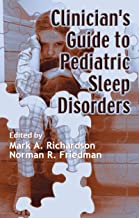Non-Rapid Eye Movement Sleep Disorder
Resources for Patients and Caregivers
Non-rapid eye movement sleep, also known as quiescent sleep, is, collectively, sleep stages 1–3, previously known as stages 1–4. Rapid eye movement sleep is not included. There are distinct electroencephalographic and other characteristics seen in each stage.
Cluster Number:
Wiki Number: 32-Non-Rapid Eye Movement Sleep Disorder
Diagnosis:
US Patients:
World Patients:
Sex Ratio:
Age Onset:
Brain Area:
Symptoms:
Progression:
Causes:
Medications:
Therapies:
Youtbube Video: Sleep Stages
Youtube Video: Sleep Research: REM vs. NREM Sleep
Amazon or Library Book: Clinician’s Guide To Pediatric Sleep Disorders
Click the book to click or buy from Amazon.

